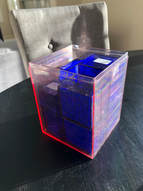 I love having my daughter home from college for the holidays. To have our family complete again, is a special gift that I treasure. My daughter enjoys playing games as much as I do, and I always look forward to this time together. This holiday weekend we started rifling through our game closet as we usually do, when we unexpectedly unearthed a transparent rose-colored box filled with small blue containers. All I remember about this box, was that it was a homemade game that been given to me decades ago by my grandma. After many moves it had unfortunately been tucked away out of sight, and forgotten. Our recent move must have unearthed this hidden treasure and brought it back into our mix of games again. My daughter and I both looked at the box and then exchanged a look of intrigue. I knew this game was begging to be played. 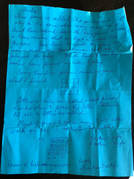 As I brought the game to our dining room table, a folded up blue piece of paper came tumbling out. As I unfolded the paper and began to read, memories of childhood of game play flooding into my mind. I loved opening up my grandma's game cupboard and carefully selecting games with my siblings and cousins. We would stay entertained for hours playing all of our favorites. Discovering this little box of blue containers was like unlocking a piece of my family history. I could hear my grandmother sweet voice as she explained this game’s significance... Tisha, 3 letters = 10 points The person with the high score wins! 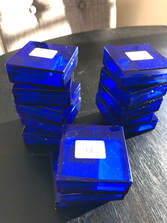 As I stared at this blue sheet of paper holding a little piece of family history, it dawned on me how much of a legacy my grandma has made on my life. I reflected back on how much she loved not only games, but game shows. So did I. When I was young I remember the best part of staying home from school sick was laying on the couch with my Vernor’s Gingerale and soda crackers watching game shows all day. I loved watching classics like the $25,000 Pyramid, Hollywood Squares, and the Joker’s Wild. No doubt this fascination of game play and game shows has made an impact on my educational journey as I have infused many gamification strategies into my teaching as well as adapting games that I love and using them for learning. Who knew that my grandma was creating her own games too?! So cool. 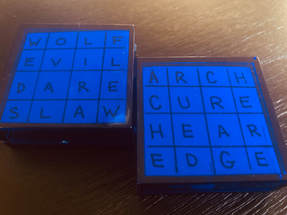 After reading my grandma’s letter, I did a little Google search and discovered a little more about this game my grandma loved. The NBC television game show, Charge Account, premiered in 1960 and was a segment of The Jan Murray Show. Just as she described, on the show a container of 16 letters was selected and tossed in a cylinder. One by one the letters were called out and each of the two contestants strategically placed them in a square of choice within a 16-square grid to make the most three or four letter words that they could. Contestants received $25 for each four-letter word they created and $10 for each three-letter word. The player with the most money won the game and used his or her winnings to buy one of the three prizes shown to them at the beginning of the game. Knowing this little piece of history, made me super excited to start playing. I didn’t want to waste any more time getting started. We took the 14 blue containers out of the rose colored box and found 16 letter tiles and a filled out grid nestled inside that indicated the perfect letter arrangement. We each drew a 16-box grid on a piece of paper and opened up the first container and placed it in the center of the table. One-by-one we turned over a cardboard tile and wrote the letter revealed on our grid. Once, all the tiles were called out we counted up our 3 and 4 letter words in each row, vertically and horizontally, and wrote a 10 or 25 by each one to calculate our total score. We kept a score sheet to tally our points, and then opened the second container to start round 2. All 14 rounds were played and when we were finished, we added up all our points and the player with the highest score won. 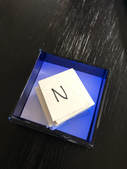 It was so much fun! I could easily see why my grandma played this game so much, and now my head was spinning with ideas! Just like I’ve done with many other games, I could adapt this one for classroom learning as well! Better yet, it could be played with a variety of ages and unlimited players at once. I even had our 7 year old niece joining in the fun this weekend! I immediately began thinking of how to streamline this game for classroom play. Instead of hand drawing out my grid, I could create a template with 14 blank grids and a key with the perfect letter arrangement for each round of game play. (I've attached the pdf I created below) Now I needed to figure out how to replicate the tiles, without having to cut out the squares like my dad had painstakingly done. Within no time, my daughter had found a digital app that could randomly select letters. We tried that one round, but realized that having too random a selection of letters to be drawn made word creation difficult. For instance, the round we played only had 2 vowels. We knew there had to be a digital app out there that could allow us to select a series of letters to be called at random and save them for future rounds. Sure enough, there was! The free ios app “Letters” was just what I was looking for. I could program each of my 14 containers of letters within the app so they were ready when I played the game with my class. I could even mirror my ipad to the screen so students could see each letter as it was being called off in each round. Adapting this game for the classroom was easier than I had expected. All I’d need to do was copy off enough grid templates for my class and download the Letters app and I’d be ready to go! With 14 pre-made sets of letter combinations, you could play as few or many rounds as you wanted. I could even come up with new letter combinations or better yet, have the students create them! Give students a blank grid template and challenge them to come up with the perfect grid that is filled in perfectly with four letter words both horizontally and vertically. You could also make it a team challenge and see which team could come up with the most perfect grids within a certain amount of time! The 4 C's in action! What about math? My daughter's friend had a great idea. What if instead of letters, you called off numbers? You could have different goals each round. One round students could have to place numbers in the grids to make rows that were multiples of five. The next round students may be trying to create rows of prime numbers. What about even, odd, or multiples of numbers? I am not math minded, but all you math teachers out there I’m sure have lots more ideas! I hope in sharing a bit of my family history, you will find as much enjoyment from this throwback game as I did! I've shared a pdf of the grid template and containers combinations with you below. I encourage you to open up that game closet and think of how your favorite family games could be adapted for classroom learning. Don't have a game closet? Turn on the Game Show Network and your mind will be swirling with ideas in no time! The possibilities for bringing games into education is endless!
Share out your ideas for this game or others on Twitter and tag #MLmagical! We are all in this game together!
0 Comments
Your comment will be posted after it is approved.
Leave a Reply. |
Tisha RichmondStudent Engagement & PD Specialist in Southern Oregon, Canva Learning Consultant, Canva Education Creator, and author of Make Learning Magical. I'm passionate about finding innovative ways to transform teaching and create unforgettable experiences in the classroom. |
- HOME
- SPEAKING
- ABOUT ME
- BLOG
-
RESOURCES
- Memorable Beginnings >
- Authenticity & Agency
-
Gamified Experiences
>
- Anywhere Learning Plans
- The Amazing Race Game Plan Resources
- The Race to the Golden Ticket
- Ready Player One
- The Amazing Food Truck Race
- The Great Interior Design Challenge
- The Final Table Challenge
- Challenge Rubrics
- Challenge Ideas
- Kitchen Utensil Race & Other Variations
- Code Names for the Classroom
- Badges
- Innovation
- Creativity, Curiosity, and Collaboration
- Authentic Audience
- Legacy
- Make Learning Magical Book
- PODCAST
- T-SHIRTS
- YOUTUBE
-
RECIPES
- Workshop & Session Resources
- Dragon Smart Reviews
Proudly powered by Weebly

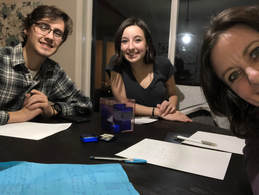
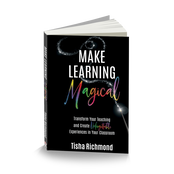

 RSS Feed
RSS Feed